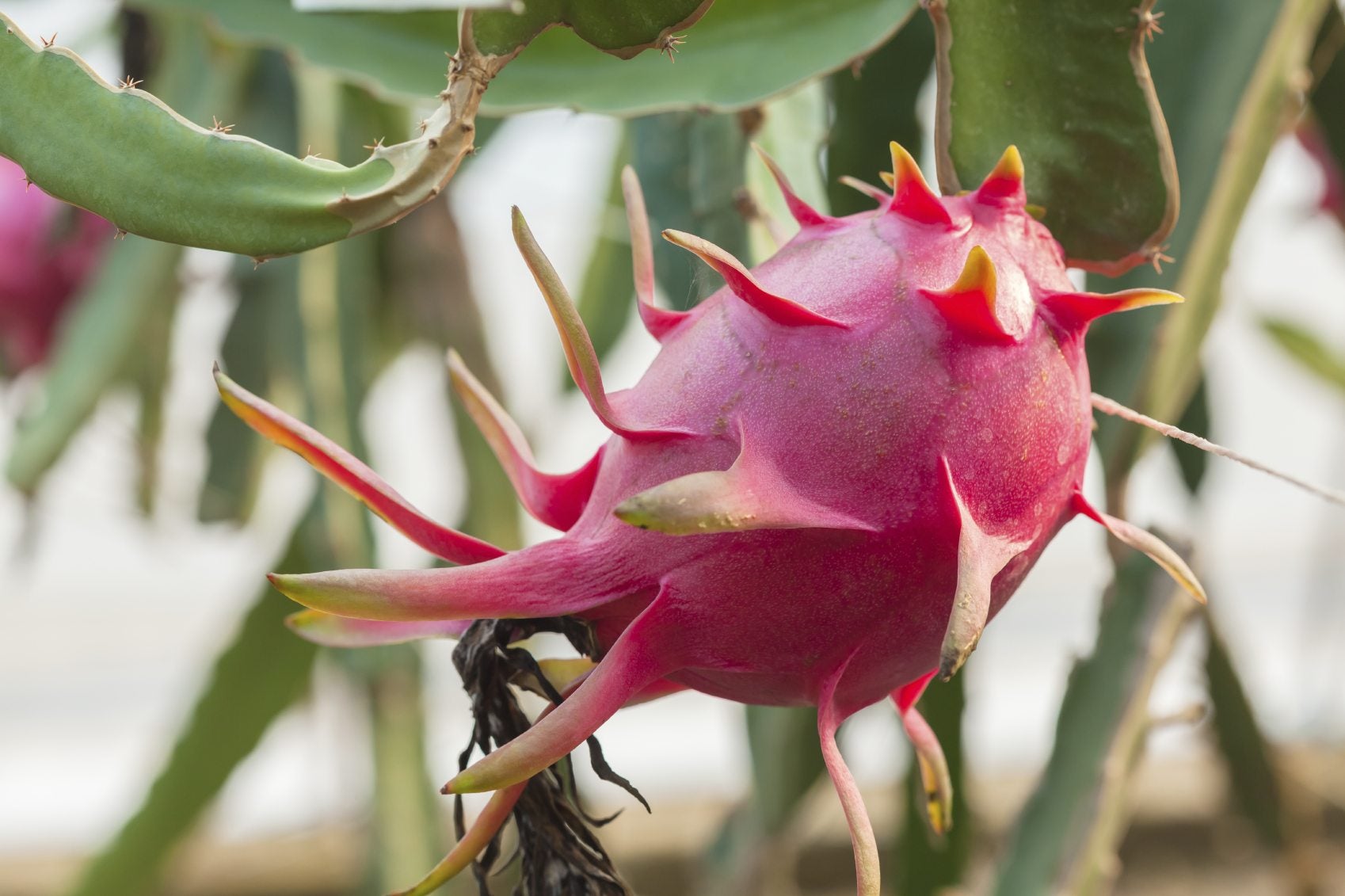Pitahaya Information: Learn How To Grow Dragon Fruit


Maybe you’ve seen dragon fruits for sale at your local grocery store. The red or yellow collection of layered scales looks almost like an exotic artichoke. Inside, however, is a sweet mass of white pulp and tiny, crunchy seeds. If you want to grow dragon fruit at home, you’ll be rewarded not only with fruit, but also with an impressive, branching cactus vine and brilliant, night-blooming flowers. Keep reading to learn how to grow dragon fruit.
Pitahaya Information
Dragon fruit (Hylocereus undatus), also known as pitahaya, is native to Central and South America and needs year-round heat. It can tolerate a brief frost and will recover quickly from any freeze damage, but prolonged exposure to below-freezing temperatures will kill it. It can tolerate heat up to 104 degrees F. (40 C.). Although it is a cactus, it requires a relatively high amount of water. Dragon fruit trees are vining and need something to climb. They are also heavy-- a mature plant can reach 25 feet (8 m.) and several hundred pounds (136 kg.). Bear this in mind when building your trellis. The best choice is strong wooden beams. A decent amount of pruning and tying is necessary in training it to follow the trellis, but dragon fruit trees are fast growing and very tolerant of pruning.
How to Grow Dragon Fruit
Dragon fruit trees can be started from seeds, but it may take as long as seven years for the plant to produce fruit. Due to this, the much more popular alternative is growing dragon fruit from a cutting of an already mature plant. This method could produce fruit in as little as six months. To propagate, cut a full segment from a mature plant. This may be anywhere from 6 to 15 inches (15-38 cm.). Make a slanted cut in the open end and treat it with fungicide. Then allow it to “cure” in a dry, shady place for a week, letting the open cut dry and heal. After that, you can plant it directly in the ground. You may get better results, however, if you first plant it in a pot and let it establish a good root system for four to six months first before transplanting.
Sign up for the Gardening Know How newsletter today and receive a free copy of our e-book "How to Grow Delicious Tomatoes".

The only child of a horticulturist and an English teacher, Liz Baessler was destined to become a gardening editor. She has been with Gardening Know how since 2015, and a Senior Editor since 2020. She holds a BA in English from Brandeis University and an MA in English from the University of Geneva, Switzerland. After years of gardening in containers and community garden plots, she finally has a backyard of her own, which she is systematically filling with vegetables and flowers.